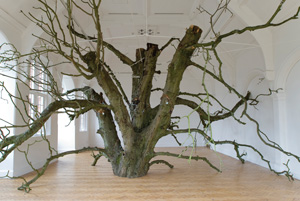Jenni Lomax gives a personal view of women in the visual arts today – and how things have changed

I have never found being a woman to be a particular disadvantage. Art school in the late 60s and early 70s was very male-dominated, with few female tutors or role models, but the women’s movement was very strong and female students began to challenge this. The first inspirational woman I encountered after graduating was Rita Donagh, a tutor at the Slade. She offered a different approach to teaching, encouraging students to listen to their own voice. Later, I looked up to Joanna Drew, Head of Exhibitions at Arts Council England from 1978 to 1986. Many leading women of the art world today, including Julia Peyton-Jones of the Serpentine, Catherine Lampert, former director of The Whitechapel, and Liz Ann Macgregor, director of MCA Sydney, benefited from starting out as part of Joanna’s team.
The visual arts are fortunate to have had some very strong women working within the sector. Many important regional museums and galleries were run by women who led the way in thinking about audiences and public response to the arts, and who set up educational programmes. Certainly during the time I’ve been at Camden Arts Centre (CAC), women directors are more in the spotlight. Within London, most of our visual arts institutions are led by women, and Penelope Curtis is the first female director of Tate Britain. In other parts of the country, my peers include strong women such as Fiona Bradley at Fruitmarket, Edinburgh and Katrina Brown of The Common Guild in Glasgow. It’s very encouraging to see a younger generation of talented women directors emerging, including Polly Staple at Chisenhale, Emily Pethwick at the Showroom and Helen Legg at Spike Island. Women have moved to a more powerful position in the arts by doing things differently, rather than making an issue of competing with men. You have to work with your strengths and be confident about them; have conviction about what you’re good at and what you want to do; and create space for yourself to do it. Don’t rely too much on others to find a space for you!
I began at CAC in 1990, a year characterised by severe cutbacks in public sector funding. CAC’s grant from the local council was reduced by 50% and the building was in urgent need of renovation. While this was a challenge, the opportunity to re-energise and rebuild something almost from scratch was exciting. Since the beginning of my time at Camden, women artists have been a significant part of the programme. They’ve represented more than 50% of all artists in the programme over time, including important exhibitions and residencies by Ana Maria Pacheco, Annette Messager, Sophie Calle, Dorothea Tanning, Anya Gallaccio, Siobhán Hapaska, Mamma Andersson, Eva Rothschild, Francis Upritchard, Claire Barclay, Eva Hesse, Katja Strunz, Anna Maria Maiolino and Angela
de la Cruz.
Jenni Lomax is Director of Camden Arts Centre.
W http://www.camdenartscentre.org



